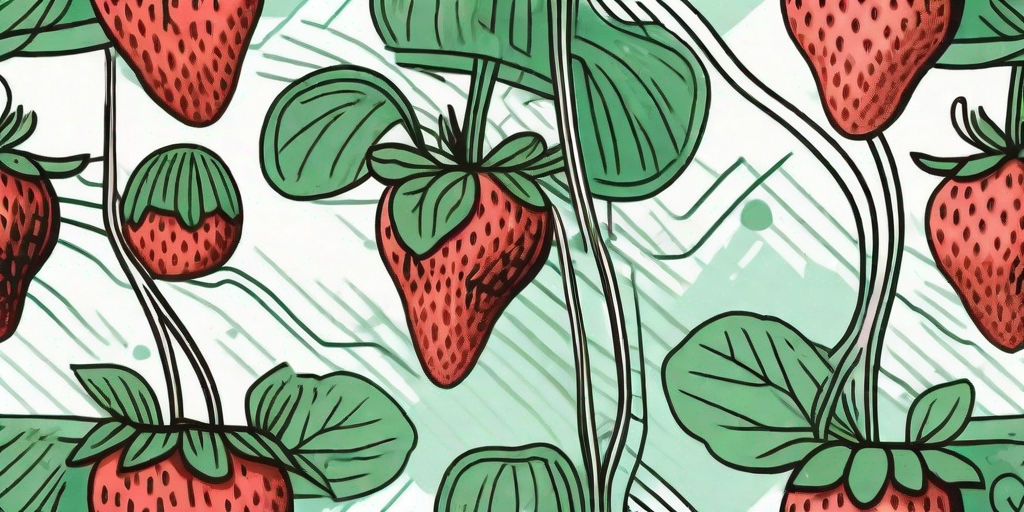
Strawberries, those sweet, succulent fruits that make summer all the more delightful. Whether you're a fan of the classic strawberry shortcake, a refreshing strawberry smoothie, or simply enjoy them fresh off the vine, there's no denying the appeal of this vibrant red fruit. But what happens when your strawberry plants start acting up? When they refuse to bear fruit, or worse, start showing signs of disease? Fear not, dear reader, for we have compiled a comprehensive guide to help you troubleshoot your strawberry woes and ensure a bountiful harvest.
The Basics of Strawberry Care
Before we dive into the nitty-gritty of troubleshooting, let's first establish the basics of strawberry care. After all, prevention is better than cure, and understanding the needs of your strawberry plants can save you a lot of heartache down the line.
Strawberries are perennials that thrive in well-drained soil with a pH between 5.5 and 7. They prefer full sun, but can tolerate partial shade. They need about an inch of water per week, more during dry spells. Strawberries are also heavy feeders, so be sure to provide them with plenty of organic matter and a balanced fertilizer.
Planting Strawberries
When planting strawberries, it's important to ensure that the crown is level with the soil surface. Planting too deep can cause the crown to rot, while planting too shallow can result in the roots drying out. Space the plants about 18 to 24 inches apart to allow for good air circulation and prevent disease.
Also, resist the temptation to harvest the berries during the first year. This allows the plants to establish a strong root system and will result in a more bountiful harvest in the following years.
Pruning and Mulching
Pruning and mulching are essential for maintaining healthy strawberry plants. Prune the runners to encourage the plants to put their energy into fruit production. Mulch with straw or pine needles to retain moisture, suppress weeds, and protect the fruits from soil-borne diseases.
Remember, a little TLC goes a long way in ensuring a bountiful strawberry harvest.
Common Strawberry Problems and Solutions
Now that we've covered the basics, let's move on to the main event: troubleshooting. Here are some common strawberry problems and their solutions.
Blossom End Rot
Blossom end rot is a common problem in strawberries, characterized by a dark, sunken area at the blossom end of the fruit. This is caused by a calcium deficiency, often due to inconsistent watering.
To prevent blossom end rot, ensure consistent watering and consider adding a calcium supplement to the soil. If the problem persists, have your soil tested to check for nutrient imbalances.
Verticillium Wilt
Verticillium wilt is a soil-borne disease that causes the leaves to turn yellow and wilt. This can be a death sentence for your strawberry plants if not addressed promptly.
The best defense against verticillium wilt is prevention. Rotate your crops, avoid planting strawberries in areas where tomatoes, potatoes, or peppers have been grown in the past three years, and consider using resistant varieties.
Slugs and Snails
Slugs and snails are the bane of many a gardener's existence, and strawberries are no exception. These pesky critters love to munch on the sweet fruits, leaving behind a trail of destruction.
There are several ways to deter slugs and snails, including using copper tape, eggshells, or diatomaceous earth around the plants. You can also consider using a slug and snail bait, but be sure to choose one that is safe for pets and wildlife.
Frequently Asked Questions
And now, for the grand finale: the FAQs. Here are some of the most commonly asked questions about strawberry care and troubleshooting.
Why are my strawberries small and deformed?
Small, deformed strawberries can be caused by a number of factors, including poor pollination, nutrient deficiencies, or pest damage. Ensure that your plants are getting enough water and nutrients, and consider attracting pollinators to your garden with a variety of flowering plants.
Why are my strawberry plants not producing fruit?
Strawberry plants may fail to produce fruit for several reasons. They may be too young, as most varieties don't produce fruit until their second year. They may also be getting too much nitrogen, which encourages leaf growth at the expense of fruit production. Finally, they may not be getting enough sunlight, as strawberries need at least six hours of direct sunlight per day to produce fruit.
Why are my strawberries rotting on the plant?
Strawberries may rot on the plant due to a fungal disease called botrytis fruit rot, also known as grey mould. This can be prevented by ensuring good air circulation, removing any infected fruits promptly, and applying a fungicide if necessary.
Conclusion
And there you have it, a comprehensive guide to troubleshooting your strawberry woes. Remember, a little knowledge and a lot of patience can go a long way in ensuring a bountiful harvest. So don your gardening gloves, arm yourself with this guide, and show those strawberries who's boss!
Happy gardening!











